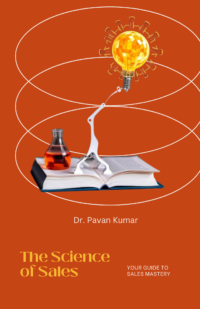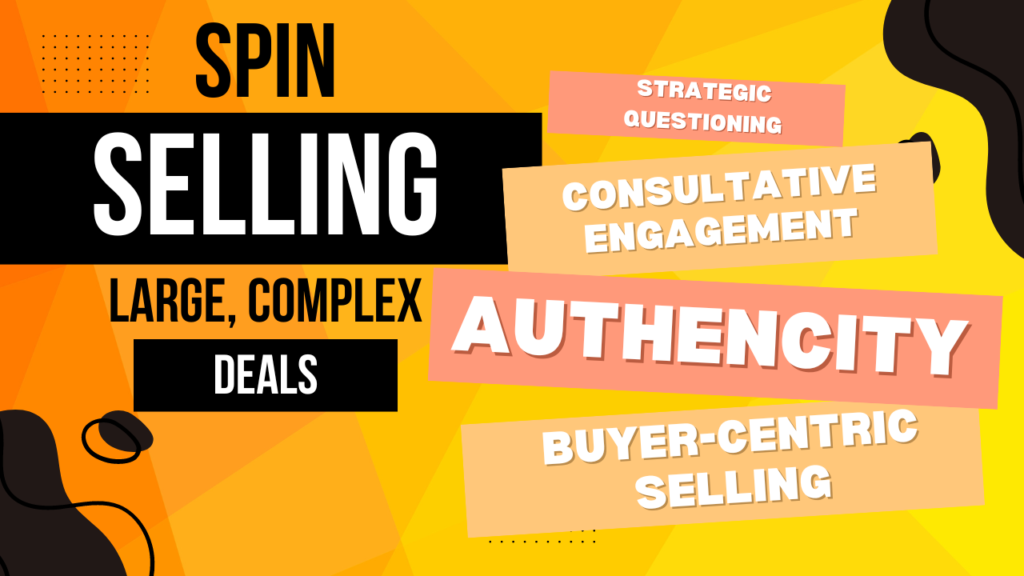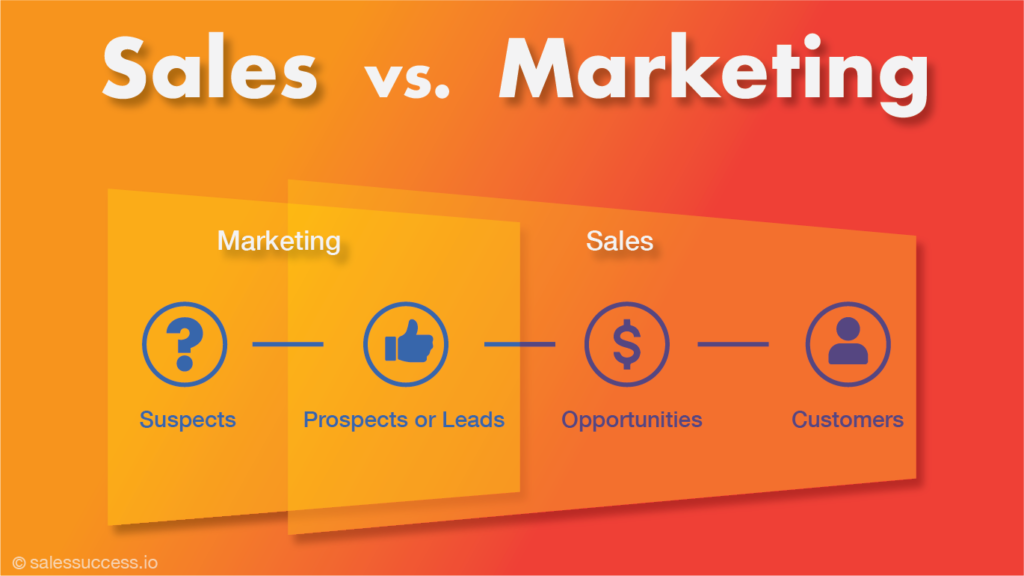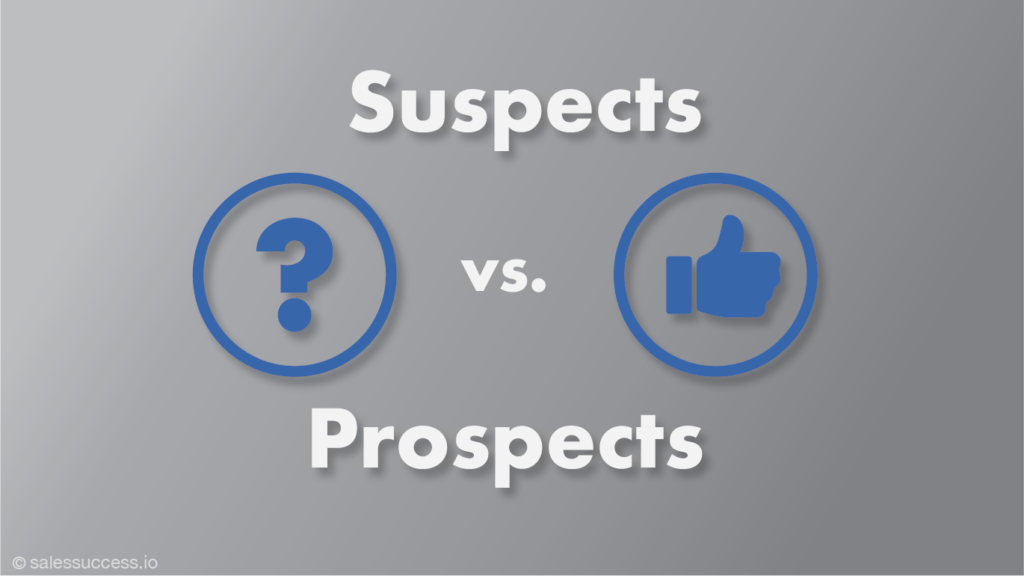![]()
Introduction
SPIN selling represents a paradigm shift in the world of sales, focusing not on the product but on the buyer’s needs and challenges. At its core, SPIN is about asking the right questions at the right time to uncover valuable insights.
By delving deep into the buyer’s world through strategic questioning, sales professionals employing SPIN selling can foster authentic, two-way conversations. This methodology emphasizes understanding over persuasion, authenticity over pitches.
It’s particularly well-suited for large, complex deals where building trust and uncovering hidden needs are paramount. In this article, we will explore how the methodology reshapes the sales process, putting the buyer front and center.
Understanding the Core Principles of SPIN Selling
SPIN, an acronym for Situation, Problem, Implication, and Need-Payoff, forms the backbone of the SPIN selling methodology. Each of these stages serves a specific purpose in guiding the conversation towards a deeper understanding of the buyer’s needs.
Situation
The Situation questions set the stage, providing context and understanding of the buyer’s current state. These questions aim to gather factual information about the customer’s environment.
Sample questions:
Could you describe your existing setup for [related problem]?
What tools or processes are you currently using to manage [specific task]?
How is your team currently handling [specific function]?
Problem
Moving into Problem questions, the focus shifts to uncovering challenges and pain points. These questions encourage buyers to share their frustrations and obstacles.
Sample questions:
What is preventing your team from achieving better results in [specific area]?
What challenges are you facing with your current solution?
Are there any areas where the current process isn’t working as expected?
Implication
Implication questions delve even deeper, exploring the consequences and impact of these challenges. They help buyers recognize the severity and urgency of their problems.
Sample questions:
How much time or money do you think is being lost due to this problem?
How does this challenge affect your overall productivity?
What are the long-term consequences if this issue isn’t resolved?
Need
Finally, Need-Payoff questions bridge the gap, demonstrating the value of the solution in addressing the buyer’s needs. They help the buyer see the positive impact of solving their challenges.
Sample questions:
How important would it be to free up resources by solving this problem?
How would resolving this issue improve your team’s efficiency?
If you had a solution that could fix this, what benefits would you expect to see?
By adhering to these core principles, sales professionals can navigate the sales process with precision and empathy, ultimately driving better outcomes for both parties involved.

Read the book here.
Exploring the Stages of SPIN Selling
The methodology unfolds in a series of meticulously crafted stages, each designed to guide the conversation towards a successful outcome.
Opening or Preliminaries
The opening sets the tone for the entire interaction, offering an opportunity to build rapport and establish trust. Sales professionals should use this phase to ease into the conversation, engaging in casual dialogue before seamlessly transitioning to more probing questions.
Investigating
This stage is all about digging deeper into the buyer’s world, uncovering their challenges, pain points, and aspirations. Through thoughtful questioning and active listening, sales professionals can gain invaluable insights into the buyer’s needs and motivations.
Demonstrating Capability
Armed with a thorough understanding of the buyer’s situation, it’s time to showcase the value proposition. This stage involves presenting the solution in a way that resonates with the buyer’s specific needs and addresses their pain points. By highlighting the benefits and advantages, sales professionals can effectively demonstrate how the solution can address the buyer’s challenges.
Obtaining Commitment
The culmination of the SPIN selling process lies in obtaining commitment from the buyer. This involves guiding the conversation towards a specific next step, whether it’s scheduling another meeting, conducting a demo, or moving forward with the purchase. By proactively seeking commitment, sales professionals can propel the sales process forward and ultimately drive towards a successful outcome.
Contrasting with Other Methodologies
Amongst sales methodologies, SPIN selling stands out for its emphasis on discovery and consultative engagement. However, it’s essential to contrast SPIN selling with other approaches to gain a deeper understanding of its unique value proposition.
Comparison with SNAP Selling
While SPIN selling prioritizes discovery and fostering meaningful buyer engagement, SNAP selling takes a different approach, focusing more on quick wins and closing techniques. SPIN selling emphasizes understanding buyer challenges and uncovering needs through strategic questioning, whereas SNAP selling leans towards rapid-fire closing tactics to secure immediate sales.
Drawbacks of Pushy Closing Techniques
Pushy closing techniques, often employed in traditional sales methodologies, can be counterproductive in complex sales processes. In large, high-stakes deals, buyers are more discerning and resistant to aggressive sales tactics. Pushing too hard for a close can erode trust and credibility, ultimately hindering sales performance rather than driving it forward.
By contrasting SPIN selling with other methodologies and highlighting the drawbacks of pushy closing techniques, sales professionals gain valuable insights into the importance of adopting a more consultative and nuanced approach in today’s complex sales landscape.
Advantages and Applications of SPIN Selling
SPIN Selling offers distinct advantages in navigating complex sales environments, where understanding buyer needs and building consultative relationships are crucial for success.
Addressing Complex Sales Environments
SPIN selling offers significant advantages in complex sales environments, especially those with lengthy cycles and multiple stakeholders. Traditional sales tactics often fall short as they fail to address buyers’ specific needs and challenges. SPIN selling empowers professionals to uncover latent needs, guide decision-makers through their journey, and drive impactful outcomes.
Building Consultative Relationships
One of the key strengths of SPIN selling is its focus on fostering consultative relationships. By emphasizing buyer challenges over product features, sales professionals position themselves as trusted advisors, not just vendors. This deeper level of trust enhances rapport and significantly increases the chances of closing successful deals.
Uncovering Hidden Needs
Another distinct advantage is SPIN’s ability to help salespeople identify pain points that buyers may not even be aware of. Through strategic questioning and active listening, SPIN selling allows sales professionals to surface hidden issues, demonstrate value, and create urgency, particularly in scenarios where buyers are uncertain about their needs.
Real-World Applications
SPIN selling has been successfully applied across various sectors, particularly in industries like technology, where solutions often require complex implementations and buy-in from multiple decision-makers. This approach has been instrumental in navigating intricate sales processes and securing high-value deals.
Conclusion
SPIN selling is a powerful methodology designed to navigate complex sales environments by prioritizing discovery, authenticity, and consultative engagement. With its structured framework—Situation, Problem, Implication, and Need-Payoff—SPIN helps sales professionals uncover buyer challenges, build trust, and foster meaningful relationships.
By embracing SPIN selling, professionals can better understand buyer needs, offer tailored solutions, and drive meaningful engagement in modern sales environments. With practice and dedication, SPIN can become a cornerstone of sales excellence, enabling success in even the most challenging deals.
Explore how SPIN Selling complements the strategies discussed in our Consultative Selling: Mastering Strategies for Modern Buyers post, the second part in our sales methodology series.
Subscribe to our Blog



